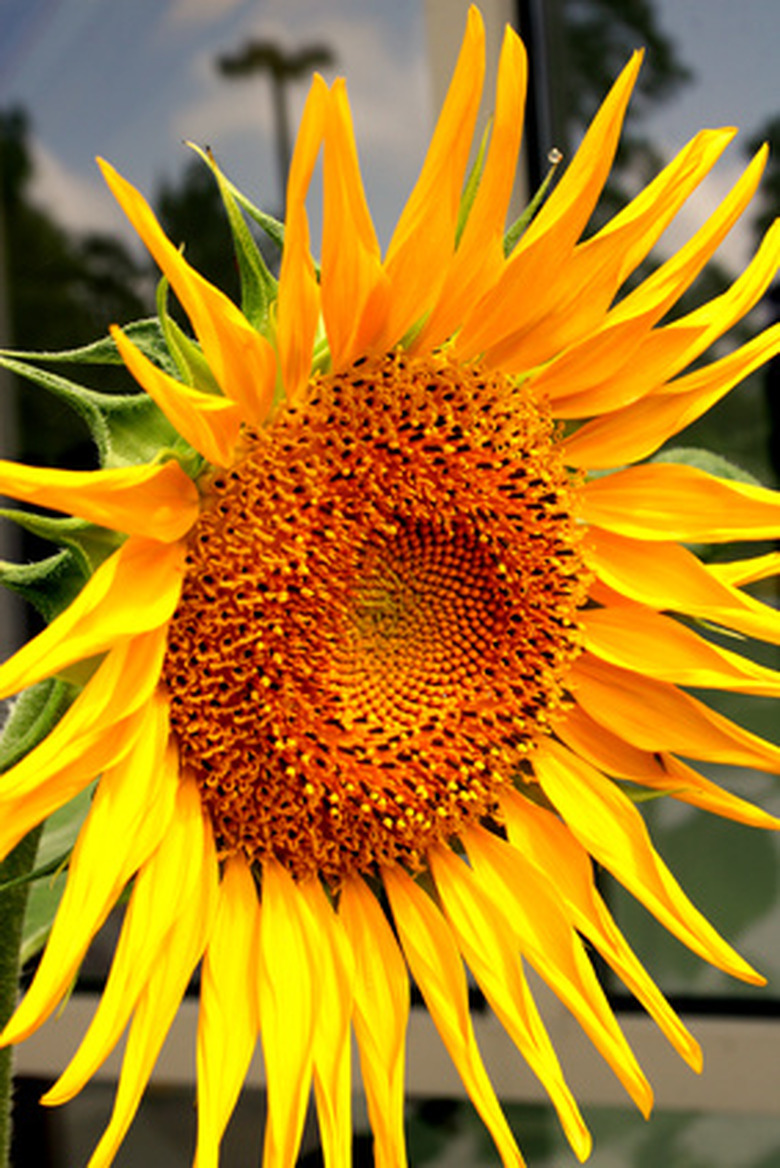Sunflower Plant Information
The sunflower (Helianthus annuus) is a well known and celebrated genus of flowering plants native to the Americas. Enjoyed for their edible seeds and large, showy flower heads, which sit atop tall stalks, sunflowers are cultivated in sunny locations across the globe. Information about sunflower plants is plentiful thanks to the plant's widespread popularity.
Appearance
Sunflowers range in appearance from one cultivar to the next, but in general sunflowers grow to be between five to eight feet tall, producing broad, green foliage that is somewhat coarse and hairy. The bright yellow and brown flower heads are often quite large and showy, sometimes reaching an entire foot in diameter. Varieties like the swamp sunflower (Helianthus angustifolius) produce much smaller flowers that resemble daisies, while some branching sunflowers like the Helianthus debilis 'Key Lime Pie' have blooms that cast a greenish tint.
Location
Sunflowers are native to the Americas from Central Canada down through the United States and into Northern Mexico. Wild sunflowers, from which popular garden hybrids originate, live in prairies throughout these regions. Despite this, Russia is the number one commercial produce of sunflower seed oil, while Argentina is second and the plant's native United States is third.
- The sunflower (Helianthus annuus) is a well known and celebrated genus of flowering plants native to the Americas.
- Sunflowers range in appearance from one cultivar to the next, but in general sunflowers grow to be between five to eight feet tall, producing broad, green foliage that is somewhat coarse and hairy.
Uses
Sunflowers fulfill a variety of purposes in the garden, such as masses serving as a temporary screen or as a bed or border plant. The flowers are excellent as cut flowers for fresh bouquets thanks to their stiff, durable stems and hardy blooms. The seeds are harvested by cutting the flowerhead off the stem when it begins to brown, and then drying the flowerhead and removing the seeds. Sunflower seeds are eaten as they are or roasted and sprinkled with salt.
Cultivation
Sunflowers are easy to cultivate so long as they get full sunlight and a soil that is neutral or alkaline. Gardeners who have acidic soil and want to grow sunflowers can simply mix in a little lime with the soil. Though moderately drought tolerant, it's best to water sunflowers regularly if you want them to grow big and tall. Especially tall varieties may need staking or some other form of support to keep them from falling over.
- Sunflowers fulfill a variety of purposes in the garden, such as masses serving as a temporary screen or as a bed or border plant.
- Sunflowers are easy to cultivate so long as they get full sunlight and a soil that is neutral or alkaline.
Problems
Like any other plant, sunflowers are susceptible to a few problems. These include various types of mildew as well as fungal leaf spot and pests such as cut worms and caterpillars. When watering, try to avoid getting the foliage wet. This will help keep the plant from suffering from fungus. Sunflowers may cause problems for individuals with sensitive skin, as the foliage may be a skin irritant to and cause uncomfortable rashes or redness.
